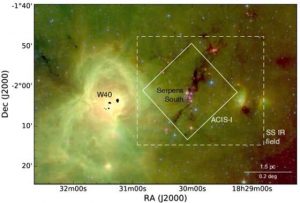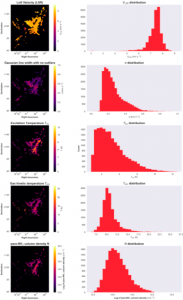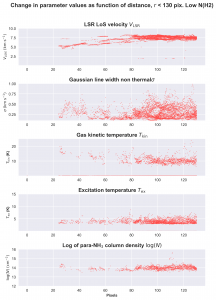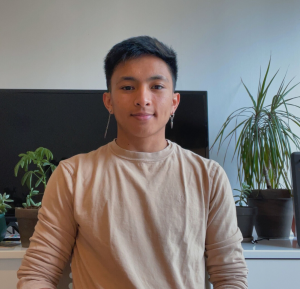Ian is going into his last year of undergraduate studies at the University of Toronto. He has a double major in Physics and Astronomy/ Astrophysics, as well as a minor in Mathematics. Originally from the Philippines, he moved to Dubai at age six, then moved to Guelph, Ontario when he was 12. Now, he lives in Toronto, pursuing his passion for astronomy and physics!
What made you decide to participate in SURP?
Ever since I was a kid, I fell in love with the sciences. I was always curious, asking questions, and just wanted to learn more about anything and everything. I wanted to know how things worked, why stuff happens the way it does, and that’s what brought me to loving physics. Physics provided a mathematical elegance in explaining most of the questions I was curious about.
At some point, my attention was directed upwards— I started asking questions about the night sky. This is when I fell in love with astronomy. You could only imagine how ecstatic I was when I learned that I could combine my two passions into one— astrophysics! When I learned about SURP, I knew instantly that I wanted to be a part of it. I could learn more about the subjects I love, and apply the knowledge I already have, and also pick up new skills. As well, I want to pursue a Ph.D in astronomy, so having the research experience under my belt would be most beneficial.
What is your favourite thing about SURP?
I love that with every day in this program, I’m always learning something new. Everyday I learn about stars and their formation from the papers I am reading, or a new helpful bit of code that can help with me with my project. I also love the fact that I am strengthening the skills I already have, but also building foundations for new skills. Most of all, I love the mentorship. Working with my supervisor, Dr. Rachel Friesen, has been a dream. Rachel has provided amazing guidance over the project, and is always super helpful when I have questions.
Can you tell us about your research project?
We are studying the impact of high mass star formation on dense clouds of molecular gas. Specifically, we are looking at the W40 region in the constellation Serpens, which is one of the closest sites of O and B star formation. This region consists of three parts which are interrelated: the HII region and molecular cloud, as well as a young cluster of stars. These stars and their formation can impact the surrounding cloud via their luminosity, outflows, and stellar winds. These can consequently affect the star forming activity nearby. We are studying the properties of the young stellar cluster and the surrounding cloud, and combined with investigations of their temperatures and kinematics, we hope to determine the impact of young stars on the dense gas and its ability to form new stars.
Can you explain how SURP has perhaps been different from your undergrad work?
SURP has been quite different from undergrad work. The questions posed in my research do not have a well-defined answer, as opposed to questions in undergrad courses. The research is open-ended, and it is so rewarding making progress and getting ever so closer to an answer. Also, instead of covering a breadth of topics in moderate detail like in undergrad courses, you cover just one specific topic and really go in depth with it.
What are your plans for the future?
I really want to pursue graduate studies, and obtain a Ph.D in an astronomy related field. The specifics, I still don’t know and hope to figure out soon! I just know that I love astronomy and research and would love to keep doing this.
For more SURP Student Spotlight profiles visit:
dunlap.utoronto.ca/training/surp/studentspotlight2021.

Spritzer IRAC and MIPS three-colour image of Serpens South and W40 region. Inner box is Chandra ACIS-I field of view, outer dashed boxes Serpens South IR field. Credit: Winston, E., et al.

These are plots of the maps of various parameters of the W40 and Serpens South region as well as their distributions. Credit: Ian Niebres.

The change in parameters as a function of distance from what we believe to be the centre of the W40 complex, an O star designated as IRS 1A South with coordinates (18h31m27.83s, -02d05m23.61s). Credit: Ian Niebres.


